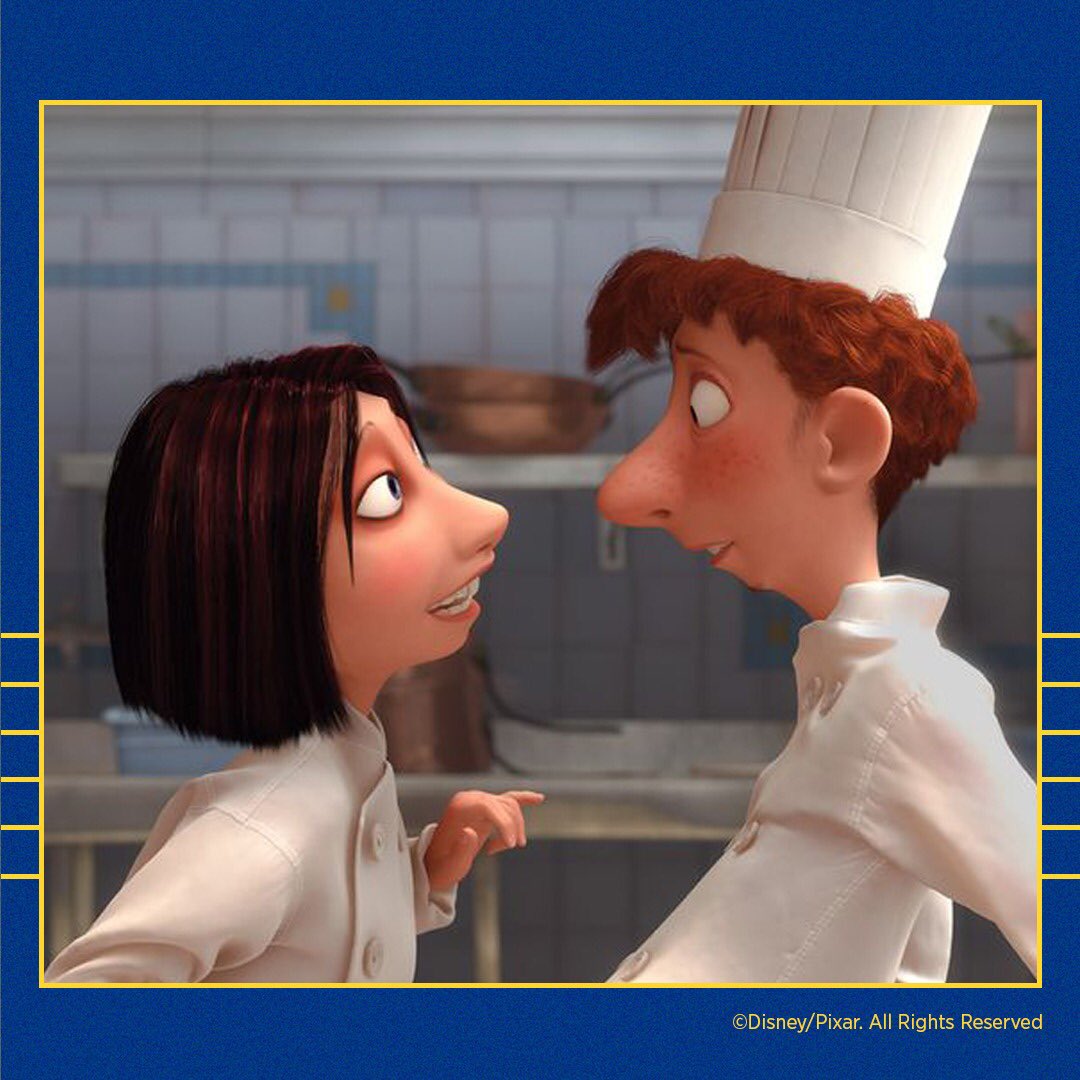

"The world’s center of cooking," Pinkava said. In their minds, it was the only place to set the film. To conduct research, they traveled to Paris. Still, when it came to the treatment of their subject matter, the creators of Ratatouille aimed for an unusual degree of realism. Of course, so is a story about a rat who can cook and communicate with humans. "You wish you could do that," Izard said. Izard, who recently bit her tongue when a diner sent back a fresh seafood dish for being "too fishy," called what Zeta-Jones’s character did a "dream" move. Every time she was shown hanging out with the rest of the cast, all Izard could think was, "That’s not real." Then there’s the scene in the 2007 movie No Reservations when a chef played by Catherine Zeta-Jones takes revenge on a customer who complains that his steak is overcooked by slamming a hunk of raw meat down on his table. Izard enjoyed watching Friends, for example, but was always perplexed by the fact that Monica, a chef, never seemed to be working. In pop culture, accurate depictions of life in the restaurant industry are rare. It had many authors and took years to finish. Maybe that’s how art works sometimes." But in reality, the movie’s original recipe needed plenty of refinement. In hindsight, Lewis said, "it sort of looks like it was orchestrated to coincide with that interest. Who’s better equipped to introduce a 6-year-old to the flavor combination of tomme de chèvre de pays, mushroom, and rosemary than a cute cartoon rat?Ī decade after its release, as Americans grow more and more obsessed with what they eat, Ratatouille still tastes fresh. Before they’re allowed to experience Anthony Bourdain, before they’re old enough to watch Top Chef, before Guy Fieri’s frosted tips tear into their consciousness, kids have Ratatouille. Even so, the vivid animated opus is an educational love letter to food. " Ratatouille shows it as a hard thing," said James Beard Award winner Stephanie Izard, executive chef at Chicago’s Girl & the Goat, "which it is." The film is one of the best fictional portrayals of a profession that, despite its designation as the new rock ’n’ roll, is often thankless. Working in a restaurant can be impossibly demanding. Real-life chefs don’t face the same kind of danger that Remy does, but they, too, exist in a cutthroat world. "That struggle of a character," Pinkava said, "is rich dramatic territory."

"Your life’s at stake in an environment where out to kill you." For Remy, the four-legged chef in question, the act of following his dream is death-defying. "If you’re a talented rat cook, you are in deep trouble," Pinkava said. What Ratatouille had going for it was a deeply conflicted protagonist. Then he added, "Anybody that’s seen it feels entirely different."Īfter all, at its best Pixar can take the most complex, esoteric, and even terrifying story and distill it down to something that’s both charming and family-friendly. "They say, ‘I can’t stand rats,’" he said. Brad Lewis, who produced the movie, continues to hear from stubborn objectors. A rodent - marker of unsanitary conditions, alleged spreader of the plague, symbol of disloyalty - with culinary ambitions is, for many, too gross to embrace. Ratatouille, Pinkava’s first full-length feature, was inspired. Pinkava remembered everyone in the room, including executives John Lasseter, Andrew Stanton, and Pete Docter, laughing. In a meeting at the then–Point Richmond, California, headquarters of Pixar, where he’d made television commercials since 1993, he pitched the concept to the studio’s brain trust.

Pinkava isn’t quite sure how he arrived at the premise of what eventually became a classic, but there it was. "I just suddenly thought," he told me, "‘What about a story about a rat who wants to become a chef?’" During a mealtime conversation with his wife around 2000, it scurried into the filmmaker’s head. Fittingly, the idea came to Jan Pinkava in the kitchen.


 0 kommentar(er)
0 kommentar(er)
